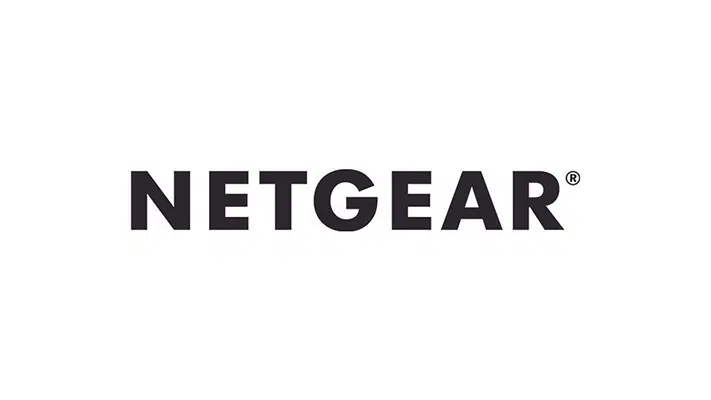
May 20, 2024 Information hub
A Critical Netgear Vulnerability: CVE-2021-29069
Imagine setting up your home network or business infrastructure with a reliable Netgear router, only to find out that a significant security flaw could compromise your entire network. Securityium discovered a critical vulnerability in certain Netgear Router devices, officially known as CVE-2021-29069. This flaw, identified as PSV-2020-0595, exposes affected routers to potentially severe command injection attacks. In this blog, we’ll explore what CVE-2021-29069 means, which devices are affected, and how you can protect your network.
Overview of the Vulnerability
The CVE-2021-29069 vulnerability poses a significant threat to Netgear devices, particularly those running outdated firmware versions. The affected devices and firmware versions include:
- XR450: Running firmware versions prior to 2.3.2.114
- XR500: Running firmware versions prior to 2.3.2.114
- WNR2000v5: Running firmware versions prior to 1.0.0.76
This vulnerability allows an authenticated attacker to execute arbitrary commands on the affected routers, posing a serious risk as attackers can potentially gain control over the router, compromising the network’s security.
Technical Description of CVE-2021-29069
The core issue of CVE-2021-29069 arises from insufficient server-side validation for user inputs within the email module of the affected routers. The vulnerability allows attackers to inject malicious commands into specific parameters, particularly email_addr and auth_user. Due to inadequate client-side validation, these harmful payloads are stored and later executed when the scheduler or the “Send Log” button triggers the sendlog() function in the /etc/email/send_log file.
Attack Flow
The attack flow of CVE-2021-29069 can be broken down into the following steps:
- Payload Crafting: The attacker crafts a malicious payload by injecting commands into the email_addr and auth_user parameters.
- Storage: The crafted payload is stored in the router’s system configuration, awaiting execution.
- Activation: When the scheduler or the “Send Log” button is activated, the sendlog() function is executed.
- Dependency: The sendlog() function depends on the print_smtpc_arg() function within /etc/email/send_log, which retrieves configuration settings using $nvram variables.
- Payload Retrieval: The malicious payload is extracted from the email_addr and auth_user variables and passed to the eval function.
- Execution: Arbitrary commands are executed on the system, leading to unauthorized command execution on the router.
Impact and Severity
The National Vulnerability Database (NVD) has assigned CVE-2021-29069 a CVSS 3.1 score of 8.4, categorizing it as high severity. This high score reflects the significant potential impact of the vulnerability on affected systems. Exploiting CVE-2021-29069 can lead to severe consequences, including unauthorized access to the router, control over network traffic, and potential data breaches.
Netgear’s Response
Netgear has acknowledged the CVE-2021-29069 vulnerability and has demonstrated a commitment to addressing such security issues. The company has released firmware updates to fix CVE-2021-29069 in the affected models. Users are strongly encouraged to update their devices to the latest firmware versions to protect against potential exploits. Netgear has also published a security advisory on their website, providing detailed information and guidance on addressing the vulnerability. The advisory can be found at Netgear’s Security Advisory.
Injection Point
The injection point for CVE-2021-29069 is within the /etc/email/send_log file. The relevant code responsible for this issue is as follows:
- Line No 95: cmd=”cat $email_file | $smtpc $(print_smtpc_arg) >/dev/null 2>$err_file”
- Line No 96: if ! eval $cmd; then
Detailed Explanation of CVE-2021-29069
The vulnerability in question primarily affects the email module within the affected Netgear routers. Here’s a more detailed breakdown of how CVE-2021-29069 operates:
- Insufficient Validation: The email module fails to properly validate user inputs on the server side. Parameters such as email_addr and auth_user are not sanitized, allowing attackers to inject malicious commands.
- Storage of Malicious Payloads: The injected commands are stored within the system configuration of the router, effectively embedding the malicious payload within the device’s settings.
- Triggering Execution: CVE-2021-29069 is triggered when the scheduler or the “Send Log” button is activated. This activation calls the sendlog() function.
- Function Dependency: The sendlog() function relies on the print_smtpc_arg() function to retrieve configuration settings. The print_smtpc_arg() function utilizes $nvram variables to fetch these settings.
- Command Execution: The malicious payload, stored in the email_addr and auth_user variables, is passed to the eval function. The eval function then executes the arbitrary commands on the system, leading to unauthorized command execution on the router.
Mitigation Steps
To protect against CVE-2021-29069, users should take the following steps:
- Update Firmware: Ensure that the router’s firmware is updated to the latest version released by Netgear. The updates specifically address CVE-2021-29069 and mitigate the risk of exploitation.
- XR450: Update to firmware version 2.3.2.114 or later.
- XR500: Update to firmware version 2.3.2.114 or later.
- WNR2000v5: Update to firmware version 1.0.0.76 or later.
- Monitor for Updates: Regularly check for firmware updates from Netgear. Keeping the firmware up-to-date is crucial for maintaining the security of the device.
- Review Configuration: Periodically review the router’s configuration settings to ensure no unauthorized changes have been made.
- Network Security: Implement robust network security practices, such as using strong passwords, enabling two-factor authentication, and regularly monitoring network traffic for suspicious activity.
The Importance of Prompt Patch Management
The discovery of CVE-2021-29069 highlights the critical importance of prompt patch management. Vulnerabilities in networking equipment, such as routers, can have far-reaching consequences if left unaddressed. Attackers are constantly on the lookout for weaknesses to exploit, and outdated firmware often provides an easy entry point.
Conclusion
The CVE-2021-29069 vulnerability in certain Netgear devices serves as a stark reminder of the ongoing challenges in cybersecurity. The vulnerability allows authenticated attackers to execute command injection attacks, potentially gaining control over affected routers. The high CVSS score of 8.4 underscores the severity of CVE-2021-29069.
Netgear’s proactive response, including the release of firmware updates and the publication of a detailed security advisory, is commendable. However, the onus also lies on users to ensure their devices are updated and secure. By promptly updating firmware, reviewing configurations, and adhering to best practices in network security, users can mitigate the risks posed by such vulnerabilities.
At Securityium, we remain committed to identifying and addressing cybersecurity threats, providing our clients with the expertise and tools needed to protect their networks. Stay vigilant, stay updated, and prioritize security to safeguard your digital assets against emerging threats.
For more information on securing your network and staying ahead of potential threats, contact Securityium. Our team of cybersecurity experts is here to help you navigate the complexities of modern network security, providing bespoke solutions to meet your specific needs. Visit our website at Securityium for more details on our services and how we can assist you in enhancing your cybersecurity posture.
